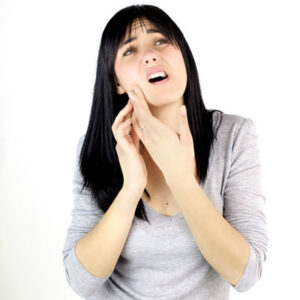Temporomandibular Disorder (TMJ)

Temporomandibular disorders are a group of disorders that all involve the temporomandibular joint. Which is found just in front of the ear, between the temporal bone and the mandible or jaw bone. As well as associated muscles of chewing and speech.
Normally between the temporal bone and jaw bone, there’s a synovial cavity wrapped in fibrocartilage and filled with synovial fluid which is a protein-rich fluid that reduces friction between the sliding bones.
There is an upper and lower compartment divided by a disc in the middle. The muscles surrounding the joint are the temporalis, masseter, and both lateral and medial pterygoids controlled by the trigeminal nerve.
Causes of Temporo mandibular joint disorders can be categorized in two ways.
Intraarticular or within the joint or extra- articular, outside the joint involving the surrounding musculature.
Intra-articular causes are called TMJ disorders and involve abnormalities of the bone in the joint, such as inflammation like Osteoarthritis or rheumatoid arthritis.
Disorders of the disc or laxity of the fibrocartilage or even trauma or bleeding in the joint.
Extra-articular causes are TMJ or temporomandibular muscle disorders, they include overuse of the muscles like bruxism which is grinding or clenching your teeth or muscle inflammation.
Common symptoms are: pain and tenderness when eating, yawning or moving your jaw, causing in some cases headaches, toothaches or earaches.
It can also cause joint dysfunction and limited range of motion, where the jaw locks or cannot open or close. Clicking out popping noise in the jaw is also common as well as jaw deviations.
It’s important to get a proper diagnosis. The internal jaw can be looked at further by plain x-ray film or CT scan if needed or if intra-articular damage is suspected.
MRIs can tell us more about inflammation of the intraarticular disc and evidence of joint inflammation.
Treatment of TMJ disorder depends on the underlying cause.
Either way, the initial goal is to help reduce pain, inflammation and improve jaw function.
Some other helpful therapies are:
- Massage of the masseter, temporal and pterygoid muscles
- Moist heat or cold compress
- Softer food diet
- Avoid strain: dental work, chewy food
- Oral appliances for nocturnal bruxism
- Cognitive-behavioral therapy
- Medications: like muscle relaxers and NSAID’s.
- Physical therapy: I made a great video with a lot of TMJ exercises and stretches, check that one out.
- Chiropractic adjustment for proper jaw alignment and muscle function.
- Some cases require surgery or arthroscopy
- Cold Laser therapy: helps reduce pain, inflammation and scar tissue. Not for both Intra and Extra Articular Temporomandibular joint disorders.